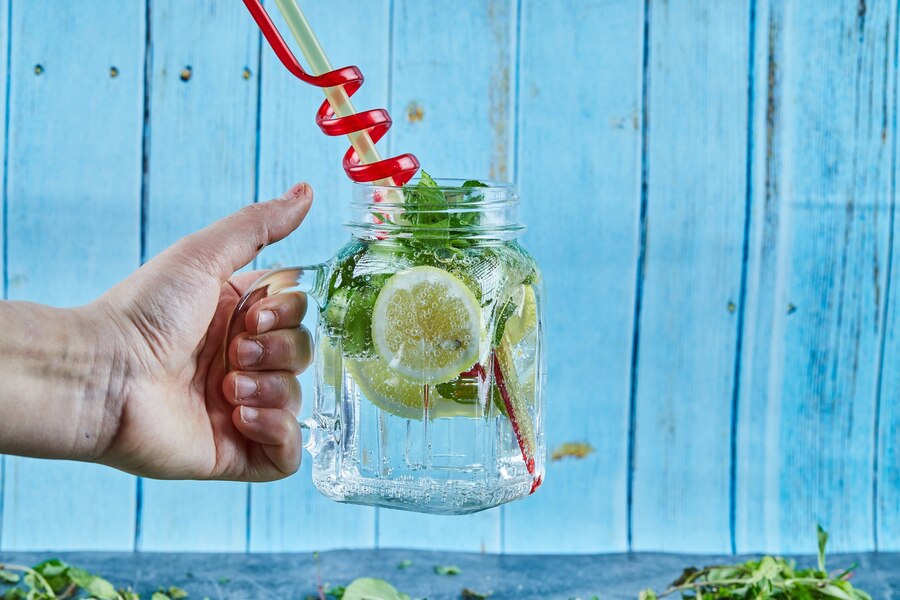Introduction
Spritzers are light, effervescent beverages that blend wine or spirits with sparkling water or soda, creating a refreshing drink perfect for any occasion. Originating from 19th-century Europe, these drinks are now a global favorite, evolving with countless variations. In this article, we’ll explore everything about spritzers—from their history and preparation techniques to their health benefits and creative recipes.
The Origins of Spritzers
Spritzers trace their roots to the Austro-Hungarian Empire, where wine was traditionally diluted with sparkling water to make it more palatable. The term “spritzer” comes from the German word spritzen, meaning “to spray,” reflecting the bubbly character of the drink. This tradition has since evolved, giving rise to countless spritzer styles across Europe and the world.
What Are Spritzers Made Of?
The classic spritzer combines three main components:
- Base Beverage: Often wine (white, rosé, or red) or a spirit like vodka.
- Carbonated Mixer: Sparkling water, soda water, or even prosecco.
- Optional Add-ins: Fresh fruits, herbs, or syrups for flavor and garnish.
Popular recipes include:
- White wine spritzers with citrus and soda water.
- Rosé spritzers with berries and mint.
- Italian Aperol spritzers made with prosecco and Aperol.
Why Are Spritzers So Popular?
Spritzers are versatile, customizable, and lighter than many traditional cocktails. Here’s why they’ve captured global attention:
- Lower Alcohol Content: Diluting wine with sparkling water reduces the alcohol and calorie count, making them a healthier choice.
- Perfect for Any Occasion: From summer brunches to winter gatherings, spritzers can be tailored to suit the season.
- Easy to Make: With simple ingredients and no special equipment required, anyone can craft a spritzer.
Comparison Chart: Spritzers vs. Other Light Cocktails
| Feature | Spritzers | Mimosa | Sangria |
|---|---|---|---|
| Base Alcohol | Wine or spirits | Champagne | Wine |
| Mixer | Sparkling water/soda | Orange juice | Fruit juice/soda |
| Add-ins | Herbs, fruits, syrups | None | Fresh fruits, brandy |
| Alcohol Content | Lower | Moderate | Moderate |
| Serving Occasion | All seasons | Breakfast/brunch | Summer parties |
| Calorie Count | Lower (varies by recipe) | Moderate | Higher |
How to Make the Perfect Spritzer
Crafting a spritzer is simple but can be elevated with a few tips:
- Choose the Right Base: Light, aromatic wines like Sauvignon Blanc or Prosecco work best.
- Balance Ratios: A common mix is 1:1 wine to soda, but adjust to taste.
- Add Fresh Elements: Enhance with citrus slices, fresh berries, or a sprig of rosemary.
- Chill Thoroughly: Serve over ice and use pre-chilled ingredients for maximum refreshment.
- Experiment: Try unique combinations like elderflower liqueur with sparkling wine or pomegranate sprit-zers for the holidays.
Seasonal Spritzer Ideas
Sprit-zers adapt beautifully to seasonal ingredients:
- Spring: Add cucumber slices and mint.
- Summer: Use tropical fruits like mango or pineapple.
- Autumn: Incorporate apple cider and a cinnamon stick.
- Winter: Mix cranberry juice with prosecco and garnish with pomegranate seeds.
The Rise of Aperol Spritzers
Aperol sprit-zers have become iconic, especially in the U.S. thanks to strategic marketing campaigns since the 2010s. Combining prosecco, Aperol, and soda water, this bright orange drink has become synonymous with aperitivo culture, particularly in Italy. It’s a perfect balance of sweet, bitter, and bubbly flavors.
Health Benefits of Spritzers
Sprit-zers are not just delicious—they’re also a lighter option compared to full-strength cocktails:
- Lower Calorie Content: By diluting wine, you reduce both alcohol and calorie intake.
- Hydration Boost: The added sparkling water helps keep you hydrated.
- Customizable Ingredients: Opt for fresh, natural ingredients to avoid added sugars.
Spritzers and Food Pairings
Pairing spritzers with the right food enhances their appeal:
- White Wine Sprit-zer: Perfect with seafood, salads, or light appetizers.
- Rosé Sprit-zer: Pairs well with grilled chicken or fresh pasta.
- Red Wine Sprit-zer: Complements hearty dishes like pizza or stews.
The Global Appeal of Spritzers
Sprit-zers have found a place in cultures worldwide, with local twists:
- Europe: Traditional wine-based sprit-zers dominate.
- USA: Fruity, vibrant sprit-zers are a summer favorite.
- Asia: Tea-based sprit-zers with sparkling water are gaining traction.
Conclusion
Spritzers are more than just a drink—they’re a lifestyle. With endless variations, they’re versatile, light, and perfect for any season or occasion. Whether you prefer a classic wine spritzer or an innovative herbal concoction, this timeless beverage continues to delight drinkers around the globe.










